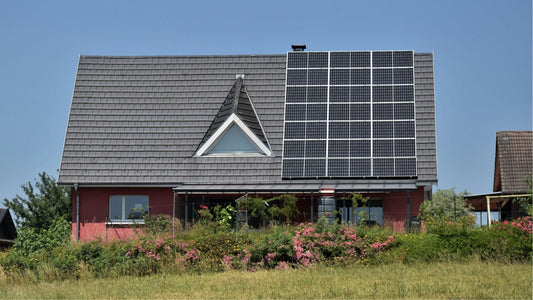Are you ready to harness the power of the sun and bring sustainable energy to your boating adventures? Rigid solar panels are an excellent way to achieve this goal. At Rocksolar, we offer a range of high-quality rigid solar panels designed to withstand marine environments while providing efficient energy generation. In this comprehensive guide, we'll walk you through the step-by-step process of installing rigid solar panels on your boat, ensuring a smooth and successful setup.
Why Choose Rocksolar's Rigid Solar Panels
Before we dive into the installation process, let's take a moment to highlight why Rocksolar's rigid solar panels are the ideal choice for your boat:
-
Waterproof and Corrosion-Resistant: Our rigid solar panels are designed to withstand exposure to water and marine conditions. The corrosion-resistant aluminum alloy frame ensures durability and longevity.
-
Various Power Options: Choose from a range of power options, including 50W, 100W, 150W, 200W, 300W, 400W, and 600W rigid solar panels. This variety allows you to select the perfect panel size for your energy needs.
-
Efficient Monocrystalline Cells: The monocrystalline solar cells used in our panels offer high energy conversion efficiency, maximizing the energy output from sunlight.
Now, let's dive into the installation process:
Step-by-Step Guide to Installing Rigid Solar Panels on Your Boat
Tools and Materials You'll Need:
- Rocksolar rigid solar panel (choose the appropriate size for your boat)
- Mounting brackets or rails
- Stainless steel hardware (screws, nuts, and washers)
- Sealant or adhesive
- Drill and appropriate drill bits
- Screwdriver
- Measuring tape
- Level
Step 1: Determine Panel Placement
- Choose a location on your boat's deck that receives ample sunlight throughout the day.
- Ensure that the chosen area is free from obstructions that could cast shadows on the panels.
Step 2: Install Mounting Brackets or Rails
- Attach the mounting brackets or rails securely to the deck using stainless steel hardware.
- Ensure that the brackets are aligned and level.
Step 3: Attach Solar Panel
- Place the Rocksolar rigid solar panel onto the mounting brackets or rails.
- Secure the panel in place using stainless steel screws, nuts, and washers.
- Double-check the alignment and levelness of the panel.
Step 4: Make Electrical Connections
- Connect the solar panel's positive (+) and negative (-) leads to your boat's electrical system or battery bank.
- Use appropriate connectors and ensure a secure connection.
Step 5: Seal and Weatherproof
- Apply a high-quality marine sealant or adhesive around the edges of the solar panel to create a watertight seal.
- This step is crucial to prevent water intrusion and ensure the longevity of the installation.
Step 6: Test and Monitor
- Test the solar panel to ensure that it's generating power efficiently.
- Monitor the panel's performance over time to ensure consistent energy production.
Explore Rocksolar's Rigid Solar Panel Options
Ready to equip your boat with reliable solar power? Explore our range of rigid solar panels, each designed to provide efficient and sustainable energy generation:
- Rocksolar 50W 12V Rigid Monocrystalline Solar Panel
- Rocksolar 100W 12V Rigid Monocrystalline Solar Panel
- Rocksolar 150W 12V Rigid Monocrystalline Solar Panel
- Rocksolar 200W 12V Rigid Monocrystalline Solar Panel
- Rocksolar Lightweight and Durable 300W Rigid Solar Panel
- Rocksolar 400W 2pcs 12V Rigid Monocrystalline Solar Panel
- Rocksolar Fully Waterproof Best 600W Rigid Solar Panel
With Rocksolar's high-quality rigid solar panels, you can bring sustainable energy to your boat and enjoy your adventures with peace of mind. Follow our step-by-step guide to ensure a successful installation, and explore our diverse range of rigid solar panels to find the perfect fit for your energy needs. Embrace the power of the sun and sail into a greener future with Rocksolar!
Visit Rocksolar.ca to learn more and discover the possibilities of solar energy for your boating journey.




